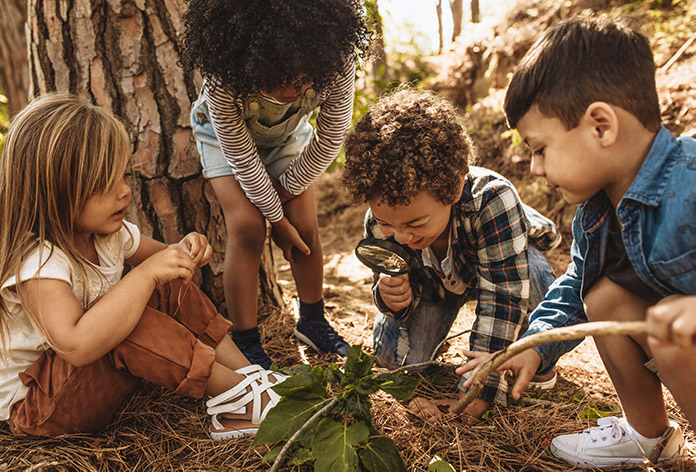One of the most frequently asked questions we get is, “Where do I start?!” With everything that goes into creating and implementing a landscape design- site analysis, mapping, plant selections, hardscape design, soil building, plan approval, finding talent, implementation- the first step can be overwhelming! Do not fret. The journey of a thousand miles begins with one step.
Bring to mind one of your closest friends. How did you all meet? Do you remember one of your first conversations? You probably didn’t know much if anything about them then, but look how far you have come. Consider the process of designing your garden as a growing conversation between you and the land. Just like you didn’t know everything about your friend when you first met, you don’t need to have all of the answers to start your design conversation.

The best conversationalists are great listeners. Garden design is no different. By listening to the land you start to form a relationship, just like a conversation between friends. The secret that turns good garden designers into great garden designers is the ability to listen to and observe the land. By starting your garden design process with observation you create a solid foundation rooted in reality. You can avoid expensive and ecologically damaging mistakes, and you can enjoy a design that works in synergy with nature.
The first phase of any design process is observation. Take walks around the site. Enjoy this time away from your busy life to get some fresh air, and to be quiet and receptive. Start a garden journal. As you explore and observe the site through the seasons, through snow storms and heavy rains and the like, you can record your observations in your journal.
A formal site analysis can guide your observation phase, and help you make sure you have all of the background information you need to make the best decisions for your design.
Consider the site’s history, climate, microclimates, existing plants and animals, soil, water, sun, shade, wind, views, soundscapes, and its above ground and underground utilities. Record your analysis in your journal.
Don’t worry about getting everything perfect in your design on your first try. A great garden design isn’t perfect or static, it’s relational and ever evolving. Your good friend is not the same today as they were when you first met, and your friendship will grow and change through the different chapters of your life. As you begin to implement elements of your design, be open to accepting feedback from the land. If adjustments are needed, make them. This is the conversation.

As you get to know your site, you will build a solid foundation for your design musings. You will feel confident making design choices because they are based in observation, analysis, and a sense of relationship with the land. So get yourself a fresh journal, put on your comfy walking shoes, and get ready to take the first step towards the garden of your dreams. You don’t have to have all the answers to get started. Just start the conversation, and never forget to listen.

